Introduction

Toenail fungus, also known as onychomycosis or tinea unguium, is a common condition that affects the nails. It is caused by a type of mold called dermatophyte, which can lead to thickened, discolored nails with white spots and streaks. Understanding how toenail fungus spreads is crucial in order to prevent its transmission and manage the condition effectively. In this article, we will explore the different ways in which toenail fungus can spread, the risk factors involved, and the importance of practicing proper foot hygiene and using appropriate treatments to prevent its spread.
Overview Of Toenail Fungus And Its Common Causes
Toenail fungus, also known as onychomycosis or tinea unguium, is a common fungal infection that affects the nails. It is caused by dermatophytes, a type of mold that thrives in warm and moist environments. Common causes of toenail fungus include wearing tight or non-breathable shoes, walking barefoot in public areas like swimming pools or gyms, and having a weakened immune system. People who have diabetes or a history of athlete’s foot are also more prone to developing toenail fungus. Understanding these common causes can help individuals take preventative measures to avoid the spread of toenail fungus.
Importance Of Understanding The Spread Of Toenail Fungus
Understanding the spread of toenail fungus is crucial as it helps individuals take necessary precautions to prevent the infection from spreading further. By knowing how toenail fungus spreads through direct contact or contaminated surfaces, people can make informed decisions to protect themselves and others. Additionally, understanding the risk factors for spreading, such as wearing tight shoes or sharing personal items, can help individuals modify their behaviors and habits to minimize the chances of infection. By being aware of the spread of toenail fungus, individuals can effectively manage and treat the condition, ensuring better foot health and preventing the infection from recurring.
How Toenail Fungus Spreads
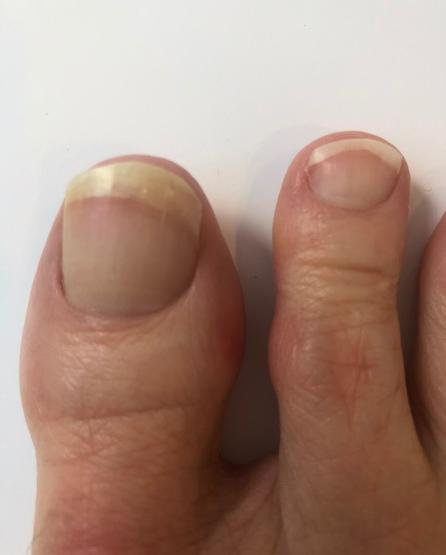
Toenail fungus can spread through direct contact or contact with contaminated surfaces. When an infected nail comes into contact with healthy nails or skin, the fungus can transfer and begin to grow. Additionally, fungal spores can live on surfaces such as floors, shoes, or nail clippers, and can infect the nails when they come into contact with them. It is important to be cautious in public places like gyms or swimming pools where the risk of exposure to fungal spores is higher. Proper hygiene and avoiding shared personal items can help prevent the spread of toenail fungus.
Direct Contact Transmission
Direct contact transmission is one way in which toenail fungus spreads. When an infected nail comes into direct contact with healthy nails or skin, the fungus can transfer and start growing. This can happen through activities like shaking hands or sharing towels. It is important to be cautious when in close contact with someone who has toenail fungus to prevent its spread. Practicing good hygiene, such as washing hands regularly and keeping nails clean, can help minimize the risk of direct contact transmission.
Fungal Infection From Contaminated Surfaces
Fungal infection from contaminated surfaces is another way in which toenail fungus can spread. Fungus can survive on surfaces such as shower floors, gym mats, and locker rooms. When individuals come into contact with these surfaces, they can unknowingly pick up the fungus and transfer it to their toenails. It is important to be cautious and avoid walking barefoot in public areas to reduce the risk of fungal infection. Regularly cleaning and disinfecting these surfaces can also help prevent the spread of toenail fungus.
Risk Factors For Toenail Fungus Spreading
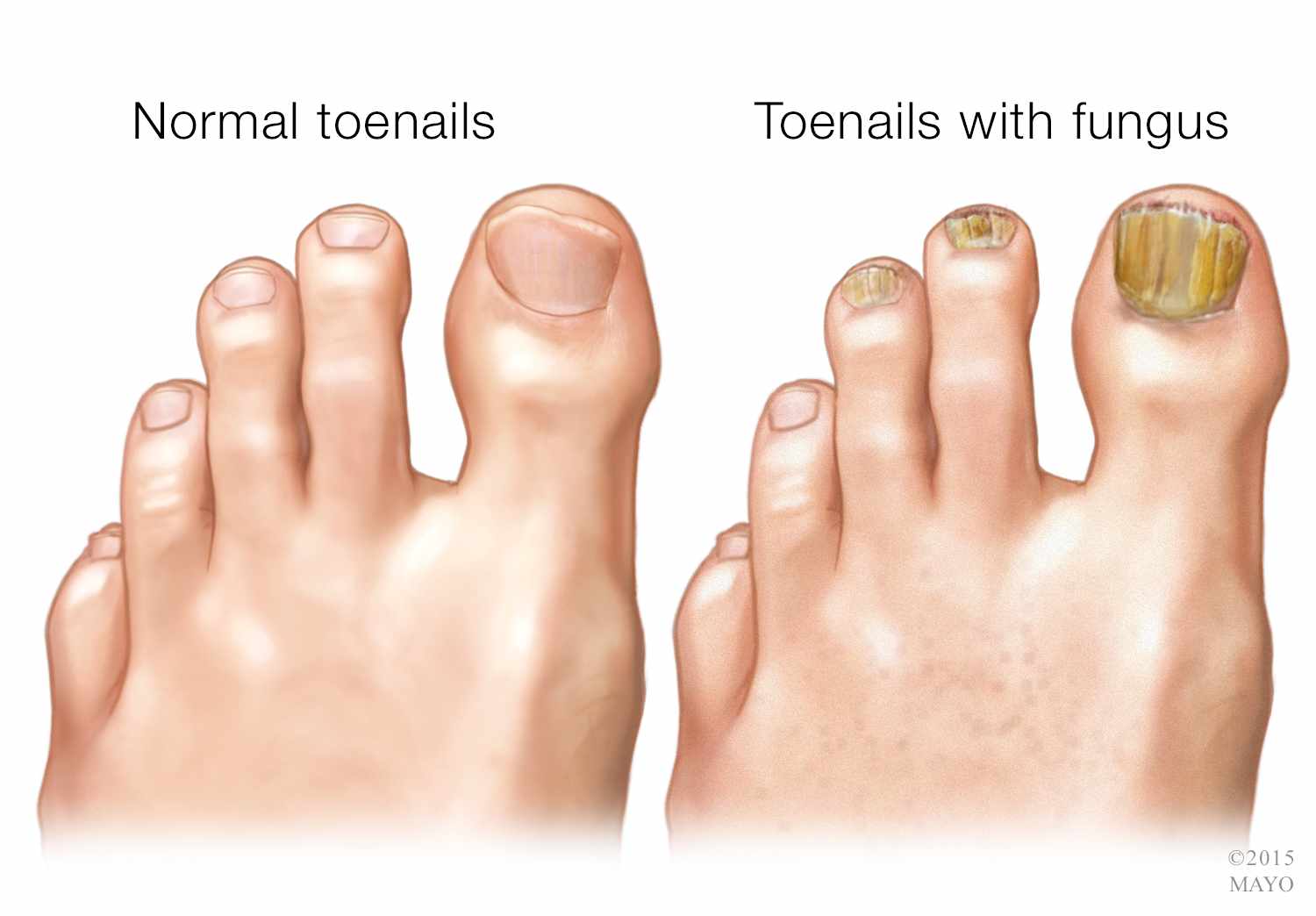
There are certain risk factors that can increase the likelihood of toenail fungus spreading. These include:
- Wearing tight or non-breathable footwear: Shoes and socks that do not allow proper ventilation can create a warm and moist environment, which is ideal for fungal growth.
- Sharing personal items such as nail clippers or socks: Fungal infections can easily transfer from one person to another through contaminated items.
- Having a weakened immune system: Conditions like diabetes, HIV/AIDS, and autoimmune disorders can weaken the body’s ability to fight off infections, making it easier for toenail fungus to spread.
- Having a history of nail trauma or damage: Nail injuries, such as those caused by sports activities or wearing tight shoes, can create openings for fungi to enter and infect the nails.
- Having a family history of toenail fungus: Genetics can play a role in susceptibility to fungal infections.
By being aware of these risk factors and taking preventive measures, such as maintaining proper foot hygiene and avoiding sharing personal items, individuals can reduce the risk of toenail fungus spreading.
Wearing Tight Or Non-breathable Footwear
Wearing tight or non-breathable footwear can increase the risk of toenail fungus spreading. Shoes that fit too tightly can create pressure on the toenails, causing them to become weak and more susceptible to fungal infections. Non-breathable materials, such as synthetic fabrics, can trap moisture and sweat, providing an ideal environment for fungal growth. It is important to wear well-fitting shoes made of breathable materials, such as leather or mesh, to promote air circulation and prevent excessive sweat accumulation. This can help reduce the risk of toenail fungus spreading.
Sharing Personal Items Such As Nail Clippers Or Socks
Sharing personal items such as nail clippers or socks can increase the risk of toenail fungus spreading. Fungal infections can easily be transmitted through these items, especially if someone already has a fungal infection. When you share nail clippers, you may unknowingly transfer the fungi from one person to another. Similarly, wearing socks that have been contaminated with fungal spores can also lead to infection. To prevent the spread of toenail fungus, it is important to never share personal items and to keep your own items clean and separate from others.
Preventing The Spread Of Toenail Fungus
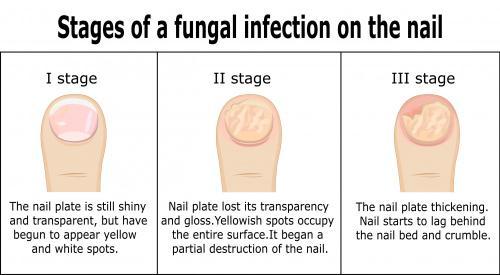
To prevent the spread of toenail fungus, it is important to maintain proper foot hygiene. Here are some measures to take:
- Keep your feet clean and dry, especially after bathing or swimming.
- Trim your nails regularly and avoid cutting them too short.
- Wear breathable shoes and moisture-wicking socks.
- Avoid walking barefoot in public areas, especially wet floors and communal showers.
- Use antifungal sprays or powders on your feet and inside your shoes.
- Don’t share personal items like nail clippers or socks.
- Disinfect any tools or surfaces that come into contact with infected nails.
By following these preventive measures, you can reduce the risk of spreading toenail fungus and maintain overall foot health.
Maintaining Proper Foot Hygiene
Maintaining proper foot hygiene is essential for preventing the spread of toenail fungus. To keep your feet clean and healthy, it is important to wash them regularly with soap and water. After washing, thoroughly dry your feet, especially in between the toes, as moisture promotes fungal growth. Additionally, trimming your toenails regularly and avoiding cutting them too short can help prevent fungal infections. Wearing breathable shoes and moisture-wicking socks can also help keep your feet dry. Lastly, avoid walking barefoot in public areas and use antifungal sprays or powders on your feet and inside your shoes to further protect against fungal infections.
Using Antifungal Treatments And Preventive Measures
Using antifungal treatments and preventive measures is essential in managing and preventing the spread of toenail fungus. Antifungal treatments, such as topical medications or oral antifungal drugs, can help eliminate the fungus and promote healthy nail growth. It is important to follow the prescribed treatment regimen and continue using the medication even after the infection appears to be cleared. Additionally, practicing good foot hygiene, such as keeping the feet clean and dry, using antifungal sprays or powders on the feet and inside shoes, and avoiding walking barefoot in public areas, can help prevent the recurrence and spread of toenail fungus.
Treating And Managing Toenail Fungus
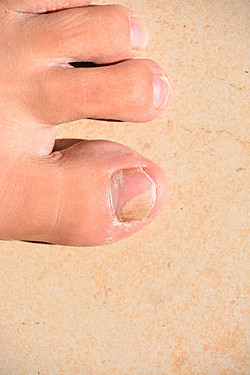
Treating and managing toenail fungus is crucial in preventing its spread and promoting healthy nail growth. There are various treatment options available, including topical medications and oral antifungal drugs. These treatments work by eliminating the fungus and allowing the new nail to grow. It is important to follow the prescribed treatment regimen and continue using the medication even after the infection appears to be cleared. Additionally, practicing good foot hygiene, such as keeping the feet clean and dry, using antifungal sprays or powders, and avoiding walking barefoot in public areas, can help prevent the recurrence and spread of toenail fungus.
Overview Of Treatment Options
Treatment options for toenail fungus include topical medications and oral antifungal drugs. Topical medications, such as creams, ointments, or nail lacquers, are applied directly to the infected nails. They work by penetrating the nail and killing the fungus. Oral antifungal drugs, on the other hand, are taken orally and travel through the bloodstream to reach the infected nail. These medications help in eliminating the fungus and promoting new nail growth. It is important to follow the prescribed treatment regimen and continue using the medication even after the infection appears to be cleared.
Preventing Recurrence And Spreading During Treatment
During the treatment of toenail fungus, it is crucial to take preventive measures to prevent recurrence and spreading of the infection. Here are some steps individuals can take:
- Proper hygiene: Maintain good foot hygiene by keeping the feet clean and dry. Regularly wash and dry the affected area, making sure to thoroughly dry between the toes.
- Avoid sharing personal items: Do not share items such as nail clippers, socks, or shoes with others, as this can increase the risk of spreading the infection.
- Wear breathable footwear: Choose shoes made of breathable materials to allow airflow and reduce moisture buildup, which can create an environment for fungal growth.
- Use antifungal products: Apply over-the-counter antifungal creams or powders to the affected area as directed by a healthcare professional. This can help prevent the spread of the fungus and support the treatment process.
- Follow the treatment regimen: It is important to follow the prescribed treatment regimen and complete the full course of medication, even if the infection seems to have cleared. This will help ensure that all traces of the fungus are eradicated.
By following these preventive measures, individuals can minimize the risk of recurrence and spreading of toenail fungus during treatment.
Conclusion
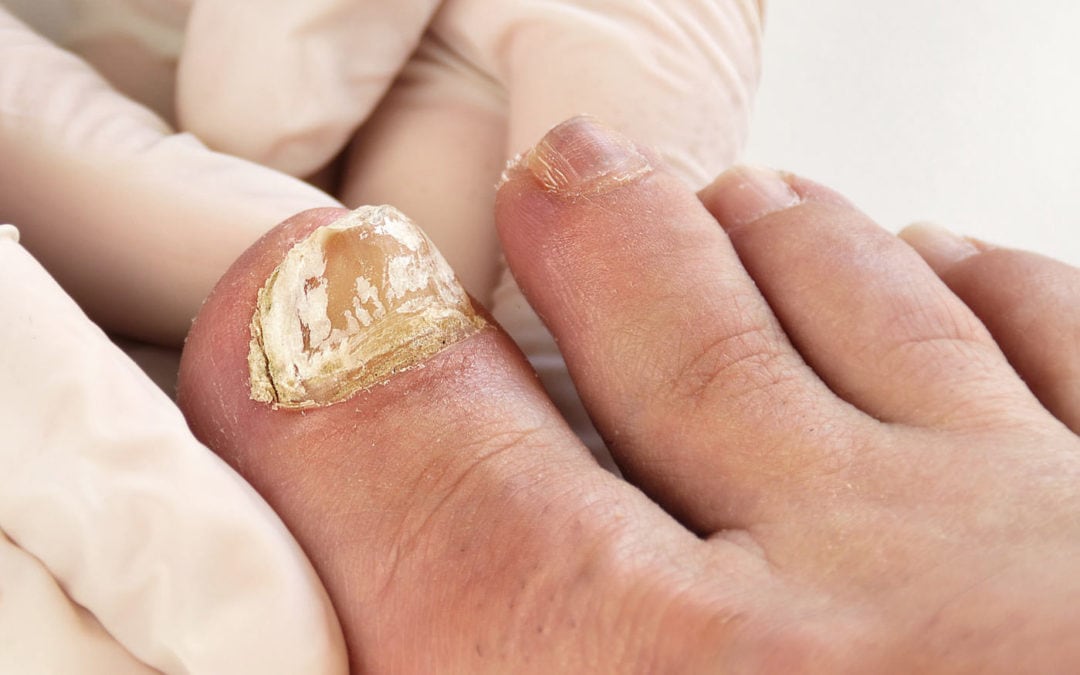
In conclusion, understanding the spread of toenail fungus is important for effective treatment and prevention. Toenail fungus can spread through direct contact or contaminated surfaces, making it crucial to practice good foot hygiene and avoid sharing personal items. Using antifungal treatments and following preventive measures can help control the spread of the infection. Additionally, it is essential to adhere to the full treatment regimen and maintain proper foot care to prevent recurrence. By taking these precautions, individuals can minimize the risk of toenail fungus spreading and ensure better overall foot health.
Summary Of The Importance Of Understanding Toenail Fungus Spread
Understanding the spread of toenail fungus is crucial for effective treatment and prevention. By knowing how toenail fungus spreads, individuals can take necessary precautions to avoid spreading it to others or different areas of their own bodies. This knowledge helps in practicing good foot hygiene, using appropriate antifungal treatments, and following preventive measures. By doing so, individuals can control the spread of the infection and reduce the risk of recurrence. It is important to prioritize foot health and take proactive steps to minimize the spread of toenail fungus.
Final Thoughts And Recommendations
In conclusion, understanding the spread of toenail fungus is crucial for effective prevention and treatment. By practicing good foot hygiene, avoiding tight or non-breathable footwear, and refraining from sharing personal items, individuals can significantly reduce the risk of spreading toenail fungus. It is also important to use appropriate antifungal treatments and follow preventive measures to control the infection. Additionally, seeking timely medical advice and following the prescribed treatment plan is essential for managing toenail fungus and preventing its recurrence. By taking these proactive steps, individuals can protect themselves and others from the spread of toenail fungus.
Frequently Asked Questions About Can Toenail Fungus Spread
Q: Can toenail fungus spread from one toenail to another?
A: Yes, toenail fungus is highly contagious and can spread from one toenail to another if proper precautions are not taken.
Q: How does toenail fungus spread?
A: Toenail fungus can be transmitted through direct contact with an infected individual or by sharing items like nail clippers, socks, shoes, or towels. It can also spread when walking barefoot in public places such as gym showers, swimming pools, and locker rooms.
Q: Can toenail fungus spread to other parts of the body?
A: Yes, if left untreated, toenail fungus can spread to surrounding skin, the fingernails, and even to other parts of the body. It is important to seek treatment as soon as possible to prevent further infection.
Q: Is toenail fungus contagious to others?
A: Yes, toenail fungus is highly contagious and can be easily transmitted to others. It is advised to avoid sharing personal items with infected individuals and maintain good hygiene practices to prevent spreading the infection.
Q: Can I get toenail fungus from a pedicure or nail salon?
A: It is possible to contract toenail fungus from a pedicure or nail salon if proper sterilization and hygiene practices are not followed. It’s important to choose a reputable salon that follows strict sanitation procedures and uses sterilized tools.
Q: What are the symptoms of toenail fungus?
A: The common symptoms of toenail fungus include thickened nails, yellow or discolored nails, brittle or crumbly nails, distorted nail shape, a foul odor, and pain or discomfort in the affected area.
Q: How can I prevent the spread of toenail fungus?
A: To prevent the spread of toenail fungus, it is essential to maintain good foot hygiene. Some preventive measures include keeping your feet clean and dry, wearing breathable shoes and socks, avoiding sharing personal items, disinfecting nail tools, and avoiding walking barefoot in public areas.
Q: Can toenail fungus go away on its own?
A: Toenail fungus doesn’t usually go away on its own. It can persist and worsen over time without proper treatment. Seeking medical attention and following a prescribed treatment plan is crucial for effective resolution.
Q: How is toenail fungus treated?
A: Treatment options for toenail fungus include oral antifungal medications, topical creams or ointments, medicated nail polish, and in severe cases, surgical removal of the infected nail. Consultation with a healthcare professional is recommended to determine the most appropriate treatment plan.
Q: Is it possible to re-infect myself with toenail fungus after treatment?
A: Yes, it is possible to re-infect yourself with toenail fungus after treatment if preventative measures are not followed. To prevent re-infection, it’s important to maintain good foot hygiene, avoid sharing personal items, and regularly disinfect any items that come in contact with the infected toenail.

I am proud to offer non-toxic beauty options. The gel polishes I offer are “9-Free”, free of nine of the most commonly found allergens and toxic chemicals in nail polish, and cruelty-free, vegan, and HEMA-free. The nail lacquers I offer range between “7-Free” and “16+-Free” and are also cruelty-free and vegan.